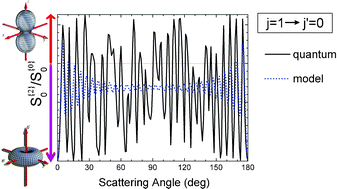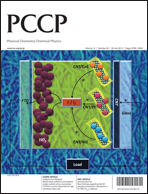Three-vector correlation in statistical reactions: the role of the triatomic parity
Abstract
This article presents a methodology for the determination of the k–j–k′ three-vector correlation assuming a statistical model for atom–diatom reactions; k and k′ are the reagent-approach and product-recoil directions, respectively, and j is the rotational angular momentum of the reagent diatomic. Although the polarization of reagent angular momentum is in most cases negligible, conservation of the triatomic parity imposes a certain polarization for some combinations involving low reagent and product rotational states. Statistical and quantum-mechanical polarization-dependent differential cross sections were calculated for the barrierless D+ + H2(v = 0,j) → HD(v′ = 0,j′) + H+ reaction. The agreement between the two is in most cases excellent, confirming the statistical character of the reaction at low and moderate collision energies.


 Please wait while we load your content...
Please wait while we load your content...